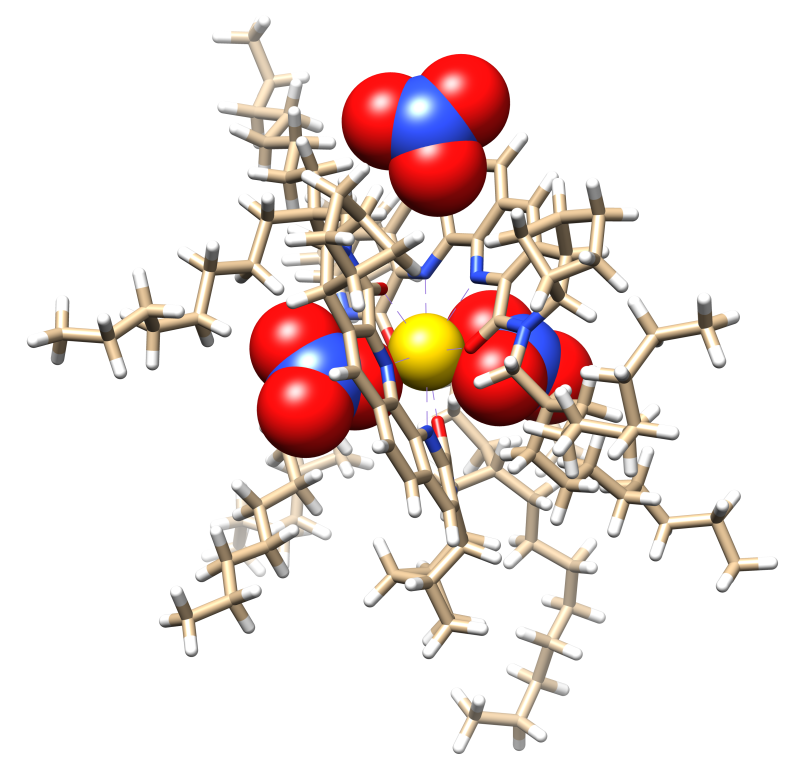
Researchers at Oak Ridge National Laboratory zoomed in on molecules designed to recover critical materials via liquid-liquid extraction, or LLE — a method used by industry to separate chemically similar elements.
The team previously designed a novel ligand, or collector molecule, to grab select lanthanides from rare-earth mineral solutions.
Lanthanides are rare-earth metals critical to energy and national security technologies for magnets, electronics and catalysts. They occur together naturally in mineral ore deposits, but their chemical similarities make separating individual elements difficult. LLE methods leverage self-separating liquids such as oil and water to isolate a target material. One example is dividing light and heavy lanthanides. The new study describes how the process unfolds, finding that an unexpected T-shaped cluster forms around target metals, acting like a magnet to create larger aggregates.
“These atomic-scale details are difficult to observe and could help us improve future rare-earth separation strategies,” said ORNL’s Alex Ivanov.







